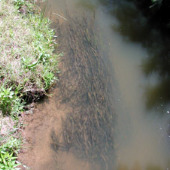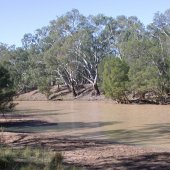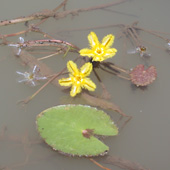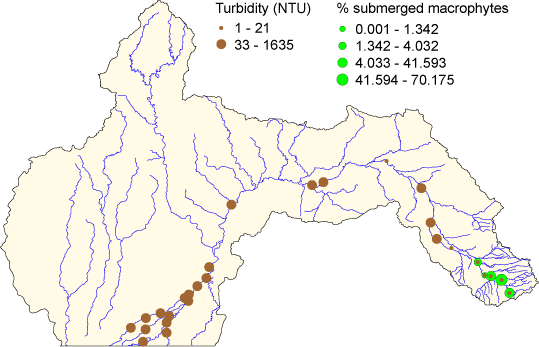|
|
Aquatic macrophytes and turbidity—A case studyThe distribution of macrophytes within the Condamine-Balonne River in the Murray-Darling FBP[2] shows that submerged species are limited to the upper catchment where turbidity is comparatively low. However, species of macrophytes with floating leaves or emergent growth forms are found throughout the catchment. The distribution of submerged macrophyte is probably limited by turbidity. Quick fact?
  Submerged macrophytes rely upon light penetrating the water column to reach them for photosynthesis to occur. Where turbidity is high, they are light limited and cannot survive. The map below shows the distribution of submerged macrophytes with a non-feathery leaf form within the Condamine-Balonne study area. These results suggest that submerged macrophytes are unable to live where turbidity is greater than 20-30 NTU. Species with leaves on or above the surface of the water (e.g. sedges and water lilies) receive light through the air without loss through the water column, so they are able to live in highly turbid conditions throughout the system. Consequently these growth forms represent the only significant macrophytes in these turbid systems.
References
Last updated: 22 March 2013 This page should be cited as: Department of Environment, Science and Innovation, Queensland (2013) Aquatic macrophytes and turbidity—A case study, WetlandInfo website, accessed 8 May 2025. Available at: https://wetlandinfo.des.qld.gov.au/wetlands/ecology/components/atmosphere-physical/light/aquatic-macrophytes-cb-case-study.html |

 — Department of the Environment, Tourism, Science and Innovation
— Department of the Environment, Tourism, Science and Innovation



